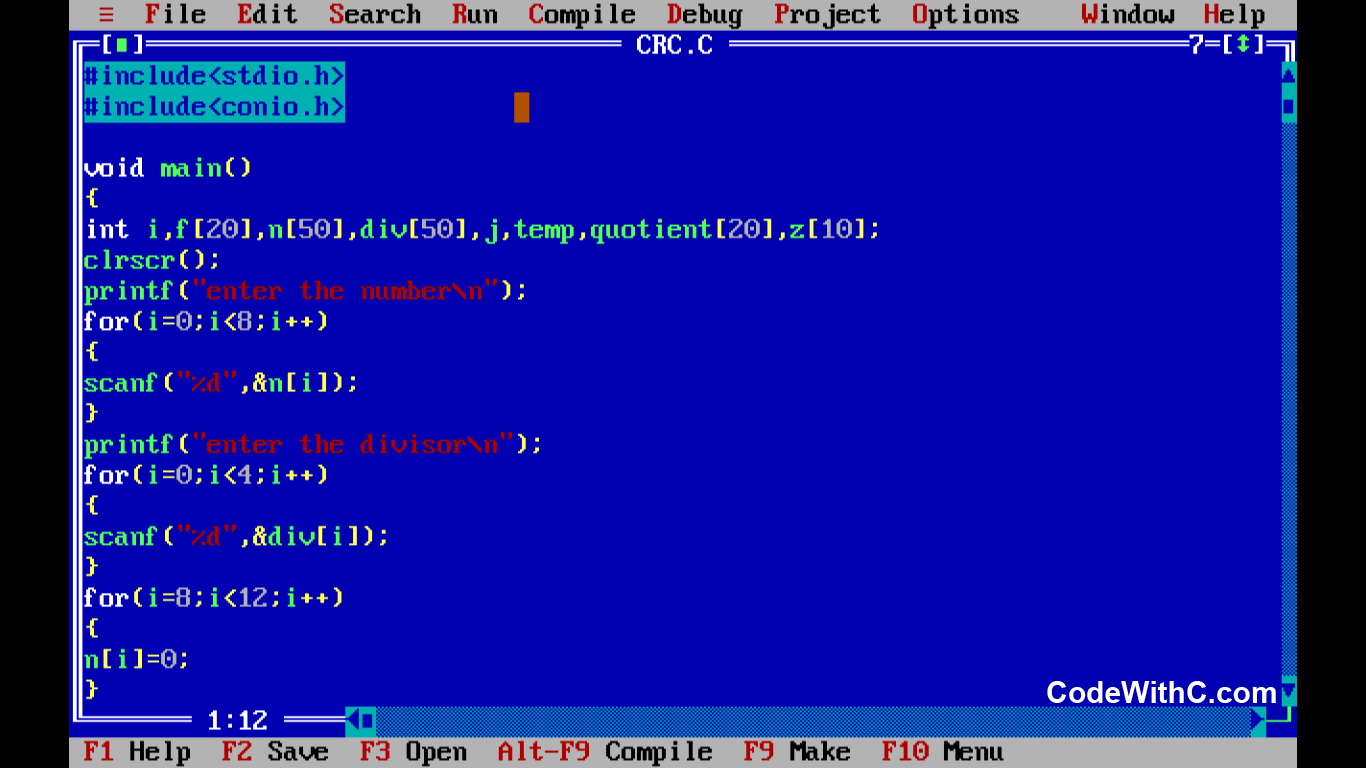
- #Cyclic redundancy check program in c with explanation software#
- #Cyclic redundancy check program in c with explanation code#
The document that describes this is RFC 793, the Transmission Control Protocol RFC. This is the scheme used by the IPV4 TCP checksum.

What might a better scheme be? One reasonably obvious answer is a modular sum. (Specifically, the parity bit successfully detects all one-bit errors in each 7-bit block of data, but potentially can fail if worse data corruption occurs.)Ī Better Data Scheme for a Cyclic Redundancy Check It isn’t perfect - it only detects certain errors that it was designed to check.We added the check data to the transmitted data (a redundancy), and.This is a simplistic scheme, but some important concepts shared with the CRC are here: So if the receiving device (modem, computer terminal, etc.) got an 8-bit quantity where the number of ones in it was not even, it knew that character had been corrupted. If the character had an odd number of ones in the lower 7 bits, the 8th bit was set to a 1, otherwise 0. The seven-bit ASCII character set in some computers used the 8th bit as a check bit to see if the character had been transmitted correctly. One of the first things I ran into while understanding the ASCII character set was parity. How does CRC Work?Įrror correction goes way back in computing.
#Cyclic redundancy check program in c with explanation software#
I’d like to present an alternative explanation here that is useful to the software implementor of CRCs. If you look at the Wikipedia page for cyclic codes, it starts by discussing Galois field arithmetic and goes uphill from there. The Cyclic part means it uses cyclic codes, which is where people tend to get lost in the math. The extra data we transmit with this checksum is the “Redundancy” part of CRC, and the second C just means this is a “Check” to see if the data are corrupted (as opposed to an ECC code, which both detects and corrects errors). The idea is given a block of N bits, let’s compute a checksum of a sort to see if the N bits were damaged in some way, for instance by transit over a network. The mathematics behind CRCs initially appears daunting, but it doesn’t have to be. For instance, Ethernet and Wi-Fi packets both contain CRCs. They are present in many of the link layers that TCP/IP is used over.
#Cyclic redundancy check program in c with explanation code#
It is an error-detecting code used to determine if a block of data has been corrupted. What is a Cyclic Redundancy Check?ĬRC stands for Cyclic Redundancy Check. I’ve even had to reverse engineer unknown CRC computations in order to interoperate with existing systems, which is tricky but doable.

From time to time, I’ve had to implement various CRC calculations for customers for different data communications systems.


 0 kommentar(er)
0 kommentar(er)
